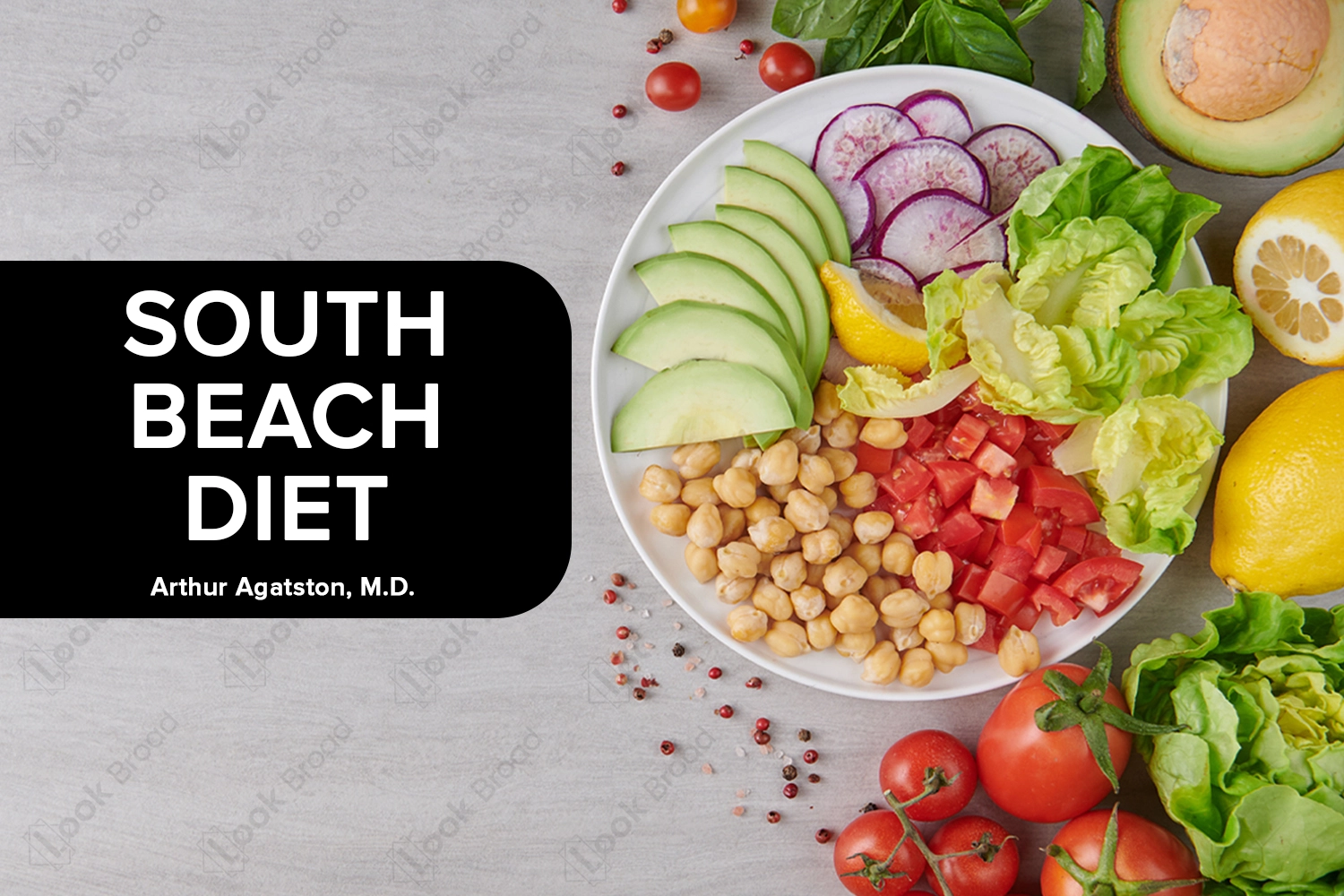Arthur Agatston’s South Beach Diet, a revolutionary approach to weight loss and heart health, emphasizes a balanced intake of nutritious foods while minimizing processed sugars and unhealthy fats. This isn’t just another fad diet; it’s a lifestyle change built on sound scientific principles, focusing on sustainable weight management and improved overall well-being. The diet’s phased approach allows for gradual adjustments, making it more manageable and less likely to lead to the yo-yo effect often seen with restrictive diets. We’ll delve into the details of each phase, exploring the permitted and restricted foods, and examining the science behind its effectiveness.
We will explore Dr. Agatston’s background and motivations, analyzing the dietary components and nutritional value, and assessing both the potential benefits and drawbacks. We will also address the suitability of the South Beach Diet for individuals with specific health conditions, providing valuable insights and practical advice for successful implementation.
The South Beach Diet’s Principles
The South Beach Diet, created by cardiologist Arthur Agatston, emphasizes a gradual approach to weight loss by focusing on healthy food choices and blood sugar control. Unlike many restrictive diets, it prioritizes sustained lifestyle changes rather than short-term deprivation. The core principle revolves around minimizing refined carbohydrates and unhealthy fats while maximizing the intake of lean proteins, healthy fats, and complex carbohydrates. This approach aims to stabilize blood sugar levels, reduce cravings, and promote satiety, leading to sustainable weight management.
The Three Phases of the South Beach Diet
The South Beach Diet is structured into three phases, each with progressively less restrictive guidelines. Understanding the differences between these phases is crucial for successful implementation and long-term adherence.
Phase 1, lasting two weeks, is the most restrictive. It eliminates most refined carbohydrates (like white bread, sugary cereals, and pastries), sugary drinks, and unhealthy fats (like trans fats and saturated fats found in many processed foods). This initial phase focuses on jump-starting weight loss by quickly stabilizing blood sugar levels and reducing cravings. Allowed foods include lean proteins, healthy fats (like olive oil and avocados), and plenty of non-starchy vegetables.
Phase 2 is a transitional phase where individuals gradually reintroduce some healthy carbohydrates, such as whole grains and certain fruits, while maintaining the restrictions on unhealthy fats and refined carbohydrates. This phase is designed to help individuals find a sustainable eating pattern that works for them, and its duration is flexible, continuing until the individual reaches their goal weight.
Phase 3 is the maintenance phase, designed for long-term weight management. It focuses on maintaining a balanced diet that incorporates a wider range of healthy foods while still avoiding excessive consumption of refined carbohydrates and unhealthy fats. This phase emphasizes mindful eating and making informed food choices to prevent weight regain.
Comparison with Other Popular Diets
The South Beach Diet differs significantly from other popular diets like ketogenic diets or low-fat diets. Unlike ketogenic diets, which drastically restrict carbohydrates to induce ketosis, the South Beach Diet focuses on selecting healthy carbohydrates while limiting refined carbs. This approach aims for sustainable weight loss and improved blood sugar control, unlike the often extreme and unsustainable nature of many ketogenic diet plans. In contrast to low-fat diets, the South Beach Diet emphasizes healthy fats, which contribute to satiety and nutrient absorption. This makes it a more balanced approach than many low-fat diets, which can sometimes lead to nutrient deficiencies.
Allowed and Restricted Foods in Each Phase
The following table summarizes the key dietary guidelines for each phase of the South Beach Diet. Remember, this is a simplified representation, and it’s crucial to consult the complete South Beach Diet guide for detailed information.
| Phase | Allowed Foods | Restricted Foods | Examples |
|---|---|---|---|
| Phase 1 | Lean proteins, healthy fats, non-starchy vegetables | Refined carbohydrates, sugary drinks, unhealthy fats | Chicken breast, salmon, olive oil, spinach, broccoli; avoidance of white bread, soda, pastries, fried foods |
| Phase 2 | Lean proteins, healthy fats, non-starchy vegetables, some whole grains, some fruits | Refined carbohydrates, sugary drinks, unhealthy fats (mostly maintained) | Addition of whole-wheat bread (in moderation), berries, brown rice; continued avoidance of white bread, sugary cereals, trans fats |
| Phase 3 | Balanced diet with emphasis on lean proteins, healthy fats, whole grains, fruits, and vegetables | Excessive refined carbohydrates, unhealthy fats (occasional indulgence permitted) | Continued focus on healthy choices, occasional treats in moderation, mindful eating |
Dr. Agatston’s Role and Expertise
Dr. Arthur Agatston is a cardiologist renowned for his development of the South Beach Diet, a popular weight-loss and heart-health program. His expertise and contributions to the field of cardiology, coupled with his personal experience, shaped the diet’s unique approach. This section details his background, motivations, and the scientific basis underpinning the diet’s principles.
Dr. Agatston’s background and motivations for creating the South Beach Diet are intertwined with his extensive experience in cardiology and his commitment to improving patient outcomes.
Dr. Agatston’s Biography and Credentials
Arthur Agatston, M.D., is a board-certified cardiologist with a distinguished career. He has practiced cardiology for many years, focusing on the prevention and treatment of cardiovascular disease. His expertise extends to the management of cholesterol, blood pressure, and other risk factors for heart disease. He’s held various positions within the medical community, contributing to research and advancements in cardiovascular health. Beyond his clinical practice, he is a prolific author, having written numerous books on heart health and weight management, most notably those related to the South Beach Diet. His extensive knowledge of the cardiovascular system and metabolic processes formed the foundation for his dietary approach.
Motivations Behind the South Beach Diet
Dr. Agatston’s motivation for creating the South Beach Diet stemmed from his observations of the limitations of traditional low-fat diets in achieving sustainable weight loss and improving cardiovascular health. He recognized that many patients struggled to adhere to restrictive low-fat diets, often leading to feelings of deprivation and eventual weight regain. He sought to create a diet that was not only effective for weight loss but also enjoyable and sustainable, emphasizing healthy, satisfying foods while minimizing processed foods and refined carbohydrates. This approach was informed by his understanding of the impact of different food groups on blood sugar levels, insulin resistance, and overall cardiovascular health.
Research and Studies Supporting the South Beach Diet
While large-scale, randomized controlled trials specifically on the South Beach Diet are limited, several studies support its core principles. Research on the benefits of reducing refined carbohydrates and increasing healthy fats and lean proteins aligns with the diet’s recommendations. Studies have shown that diets lower in glycemic index (GI) foods, like those emphasized in the South Beach Diet, can lead to better blood sugar control, improved insulin sensitivity, and reduced risk factors for heart disease. Furthermore, research consistently demonstrates the benefits of weight loss for improving cardiovascular health. The South Beach Diet’s focus on weight management through sustainable lifestyle changes contributes to these positive outcomes. The positive impact of increased physical activity, also advocated in the South Beach Diet, is well-established in numerous studies related to cardiovascular health and weight management.
Scientific Basis of the South Beach Diet
The South Beach Diet’s scientific basis rests on several key principles. It emphasizes a reduction in refined carbohydrates, which can lead to significant blood sugar fluctuations and insulin resistance. These fluctuations can contribute to weight gain and increase the risk of developing type 2 diabetes and cardiovascular disease. The diet promotes the consumption of healthy fats, which provide satiety and contribute to hormonal balance. Lean protein sources are also emphasized for their role in preserving muscle mass during weight loss and promoting feelings of fullness. This approach to macronutrient distribution helps to regulate blood sugar levels, reduce insulin resistance, and promote sustainable weight loss. The diet’s focus on whole, unprocessed foods and the avoidance of highly processed foods, sugary drinks, and unhealthy fats further contributes to its overall health benefits. The emphasis on a balanced approach, combining dietary changes with increased physical activity, further strengthens its efficacy.
Potential Benefits and Drawbacks
The South Beach Diet, while popular, presents a complex picture of potential benefits and drawbacks. Understanding these aspects is crucial for individuals considering adopting this weight-loss and heart-health focused plan. Weighing the advantages against the disadvantages helps in making an informed decision about its suitability.
The South Beach Diet’s primary appeal lies in its purported effectiveness for both weight loss and improved cardiovascular health. By emphasizing lean proteins, healthy fats, and limiting refined carbohydrates and sugars, the diet aims to regulate blood sugar levels, reduce inflammation, and promote satiety. These mechanisms contribute to its potential for long-term weight management and a reduced risk of heart disease.
Weight Loss and Heart Health Benefits
The South Beach Diet’s structured approach to food selection can lead to significant weight loss, particularly in the initial phases. This is often attributed to the reduction in calorie intake associated with limiting processed foods and sugary drinks. Furthermore, the emphasis on healthy fats and lean proteins contributes to feelings of fullness, reducing overall calorie consumption. The diet’s focus on reducing refined carbohydrates can positively impact blood sugar control, potentially improving insulin sensitivity and reducing the risk of type 2 diabetes, a significant risk factor for heart disease. Studies have shown that diets emphasizing similar principles can lead to reductions in LDL (“bad”) cholesterol and increases in HDL (“good”) cholesterol, contributing to improved cardiovascular health.
Potential Drawbacks and Side Effects
Like any restrictive diet, the South Beach Diet has potential drawbacks. The initial phase, particularly restrictive in carbohydrate intake, may lead to temporary side effects such as headaches, fatigue, constipation, and irritability. These are often attributed to the body’s adjustment to reduced carbohydrate consumption. Furthermore, the diet’s emphasis on specific food groups may lead to nutrient deficiencies if not carefully planned. For instance, an over-reliance on certain proteins might lead to a lack of essential vitamins and minerals found in fruits and vegetables if those aren’t consumed in sufficient quantities. Moreover, the long-term adherence to the diet can be challenging for some individuals due to its restrictive nature. The social aspect of eating out or attending social gatherings might also prove difficult, leading to potential feelings of isolation or deprivation.
Long-Term Sustainability Compared to Other Plans
The long-term sustainability of the South Beach Diet is a subject of ongoing discussion. While the initial weight loss can be substantial, maintaining that weight loss long-term requires consistent adherence to the diet’s principles. Compared to other diets that focus solely on calorie restriction, the South Beach Diet’s emphasis on food quality might offer a greater chance of long-term success. However, the level of restriction, especially in the initial phases, can make it difficult to maintain over an extended period. Other diets, such as those focusing on mindful eating or balanced macronutrient intake, may offer more flexible and sustainable approaches for long-term weight management. The success of any diet ultimately depends on individual factors such as commitment, lifestyle, and access to resources.
Hypothetical Case Study
Consider two individuals, both aiming to lose weight: Sarah, a 45-year-old woman with high cholesterol, strictly follows the South Beach Diet for six months. She experiences significant weight loss, a reduction in her cholesterol levels, and reports feeling more energetic. However, she finds the initial restrictive phase challenging and struggles to maintain the diet’s strict guidelines long-term, resulting in some weight regain after stopping. John, a 38-year-old man with a busy lifestyle, attempts the South Beach Diet but finds it difficult to incorporate into his work schedule and social life. He experiences some initial weight loss but struggles with the restrictions, eventually abandoning the diet and reverting to his previous eating habits. These contrasting experiences illustrate both the potential benefits and the challenges associated with the South Beach Diet’s long-term success.
The South Beach Diet and Specific Health Conditions
The South Beach Diet, with its emphasis on healthy fats and controlled carbohydrate intake, has garnered attention for its potential impact on various health conditions. However, it’s crucial to understand how this dietary approach interacts with pre-existing health issues and medications before implementation. Individual needs vary significantly, and consulting a healthcare professional is always recommended before making significant dietary changes.
The South Beach Diet and Diabetes
The South Beach Diet’s focus on limiting refined carbohydrates and prioritizing lean protein and healthy fats can be beneficial for individuals with type 2 diabetes. By stabilizing blood sugar levels and improving insulin sensitivity, the diet may contribute to better blood glucose control. The emphasis on healthy fats also aids in satiety, potentially reducing the need for frequent snacking and contributing to weight management, a key factor in diabetes management. However, it’s vital that individuals with diabetes monitor their blood glucose levels closely while following the diet and adjust medication dosages as needed under the guidance of their doctor. This careful monitoring ensures the diet’s effectiveness and prevents potential complications. For instance, a patient might experience a drop in blood sugar requiring a reduction in insulin dosage.
The South Beach Diet and High Blood Pressure/High Cholesterol
The South Beach Diet’s potential benefits for individuals with high blood pressure and high cholesterol stem from its emphasis on reducing saturated and trans fats, increasing fiber intake, and promoting weight loss. These factors can positively influence blood pressure and cholesterol levels. The diet’s emphasis on fruits, vegetables, and lean protein provides essential nutrients without the excess sodium and unhealthy fats often associated with high blood pressure and cholesterol. Weight loss achieved through the diet can also contribute to significant reductions in both conditions. A study might show that individuals following the South Beach Diet experienced a 10-15 mmHg reduction in systolic blood pressure and a noticeable decrease in LDL (“bad”) cholesterol levels after several months.
Potential Drug Interactions with the South Beach Diet
Certain medications may interact with the South Beach Diet. For example, individuals taking medications for diabetes might need adjustments in their dosage due to improved blood sugar control. Similarly, individuals on cholesterol-lowering medications might see their cholesterol levels decrease significantly, potentially requiring dosage adjustments. It is imperative that individuals discuss any medications they are taking with their physician or a registered dietitian before starting the South Beach Diet to ensure safe and effective implementation. Failure to do so could lead to unintended consequences, such as hypoglycemia (low blood sugar) in diabetic patients.
Adapting the South Beach Diet for Dietary Restrictions and Allergies
The South Beach Diet can be adapted to accommodate various dietary restrictions and allergies. Individuals with gluten intolerance can easily adapt the diet by replacing bread and other gluten-containing foods with gluten-free alternatives. Those with dairy allergies can substitute dairy products with suitable alternatives like almond milk or soy milk. Similarly, individuals with nut allergies can choose other healthy fats like avocado or olive oil. However, careful planning and substitution are essential to ensure the diet remains balanced and provides adequate nutrients. A registered dietitian can provide personalized guidance on substitutions and meal planning to meet individual dietary needs and preferences while adhering to the principles of the South Beach Diet. For example, a person with a shellfish allergy could substitute fish for poultry in recipes.
Final Thoughts
The South Beach Diet, developed by Dr. Arthur Agatston, offers a compelling alternative to restrictive dieting, focusing on long-term lifestyle changes rather than short-term weight loss. By understanding its principles, phases, and nutritional implications, individuals can make informed decisions about its suitability for their own health goals. While individual results may vary, the emphasis on healthy fats, lean proteins, and carefully selected carbohydrates provides a pathway to sustainable weight management and improved cardiovascular health. Ultimately, the success of the South Beach Diet hinges on commitment and a holistic approach to wellness.




